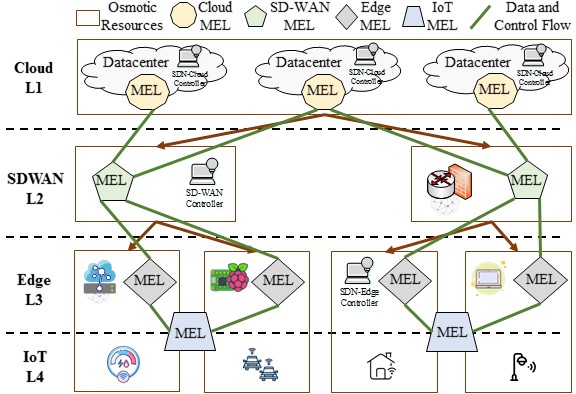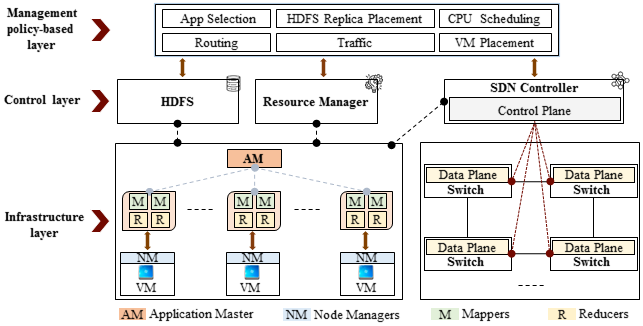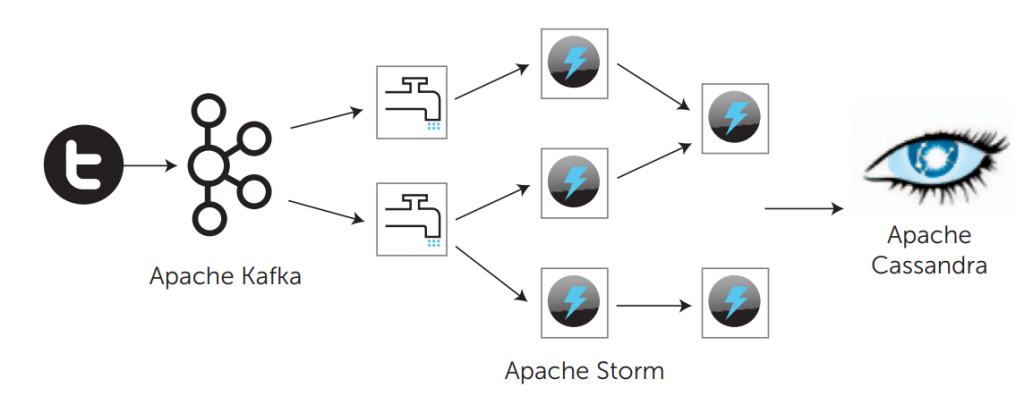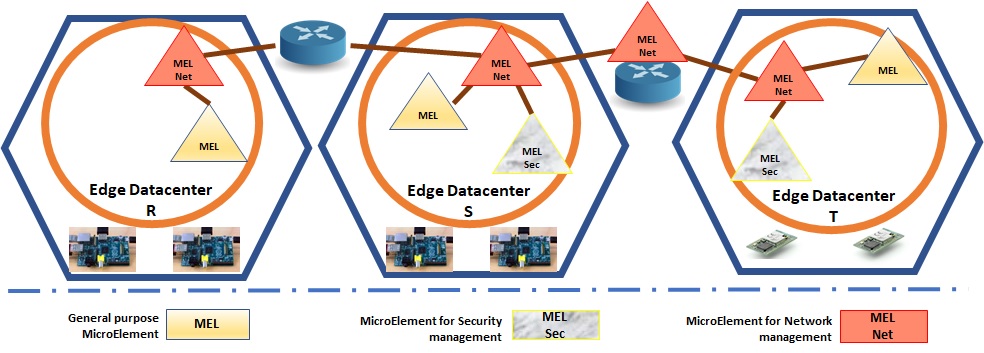IoTSim-Osmosis
IoTSim-Osmosis is a simulation framework that supports the testing and validation of osmotic computing applications. In particular, it enables unified modeling and simulation of complex IoT applications over heterogeneous edge-cloud SDN-aware environments. IoTSim-Osmosis is capable of capturing the key functions, characteristics, and behaviors of the osmotic paradigm. A wide range of osmosis applications can be simulated and evaluated in IoTSim-Osmosis. To handle the complexity and diversity of osmotic applications, IoTSim-Osmosis provides an abstract mechanism called Microelements (MELs), which encapsulates services, resources, and data.

IoTSim-Osmosis is developed to allow such hybrid infrastructures to be simulated. The dynamic management and performance metrics of IoT-oriented services across edge and cloud datacentres that communicate via SDWAN are easily achieved. In particular, IoTSim-Osmosis is capable of modeling and simulating:
- Osmotic applications running between edge and cloud
- The behaviors and features of osmotic applications running in dynamic SDN and SD-WAN networks
- Dynamic routing mechanisms based on graph theory to enable any type of network topology to be seamlessly simulated
- Several policies for SDN, SD-WAN, and MEL, VM for multilevel optimization
Find this link to download the simulator and user manual.
LINK: https://rajivranjan.net/
BigDataSimSDN
BigDataSDNSim differs from other simulation tools in supporting a holistic simulation framework that simulates MapReduce applications, BDMS, and SDN-related networks in cloud-based environments. In particular, BigDataSDNSim is capable of modeling and simulating:
- A generic big data approach for executing different big data programming models (e.g. MapReduce, Stream) simultaneously
- MapReduce applications within big data cluster management (BDMS), which is one of the key prominent frameworks for running different big data models
- The behaviors and features of SDN dynamic networks coupled with the coordination and interaction with MapReduce applications within cloud environments
- Dynamic routing mechanisms based on graph theory to enable any type of network topology to be seamlessly simulated
- Modeling several policies for SDN, MapReduce, and VM within cloud data centers for multilevel optimization
- Variety of cloud data center nodes combined with SDN controllers to satisfy the requirements of big data applications

Find this link to download the simulator and user manual.
LINK: https://rajivranjan.net/
IoTSim-Stream
IoTSim-Stream is an IoT Simulator for Stream processing on the big data that offers an environment to model complex stream graph applications in a multi-cloud environment, where large-scale simulation-based studies can be conducted to evaluate and analyze these applications. It leverages the features of CloudSim and integrating a real-time processing model with workflow scheduling and execution to execute the modeled stream graph application in a Multicloud Environment. In particular, IoTSim-Stream is capable of modeling and simulating:
- Support modeling data incentive IoT-based applications using stream processing model (aka stream graph applications
- Support modeling Multicloud environment as an execution environment for stream graph application
- Support user-defined resource provisioning and scheduling policies

Find this link to download the simulator and user manual.
LINK: https://rajivranjan.net/
IoTSim-Edge
The main properties of the simulator are listed as follows.
- New IoT application graph modeling abstraction that allows practitioners to define the data analytic operations and their mapping to different parts of the infrastructure (e.g. IoT and edge)
- The abstraction that supports modeling of heterogeneous IoT protocols along with their energy consumption profile
- It allows practitioners to define the configuration of edge and IoT devices along with the specific protocols they support for networking
- The abstraction that supports modeling of mobile IoT devices
- It also captures the effect of handoff caused by the movement of IoT devices
- This supports a cooperative edge-to-edge communication that allows the transfer of the processed data of the respective IoT device by one edge via another edge

Find this link to download the simulator and user manual.
LINK: https://rajivranjan.net/
DETER Network Simulator
We would like to announce new tools for experiment design and automation, called DEW (distributed experiment workflows). The tools enable you to design experiments focused on behavior instead of topology and to have the topology and running scripts generated automatically. The tools also enable you to collect the history of your manual actions on the testbed and to preserve files you change using automated Git versioning. Please click at:
https://deter-project.org/
to learn about these new tools, and follow links from there to richer documentation at https://dew.isi.edu.
Last Updated: 01/29/2024 10:11